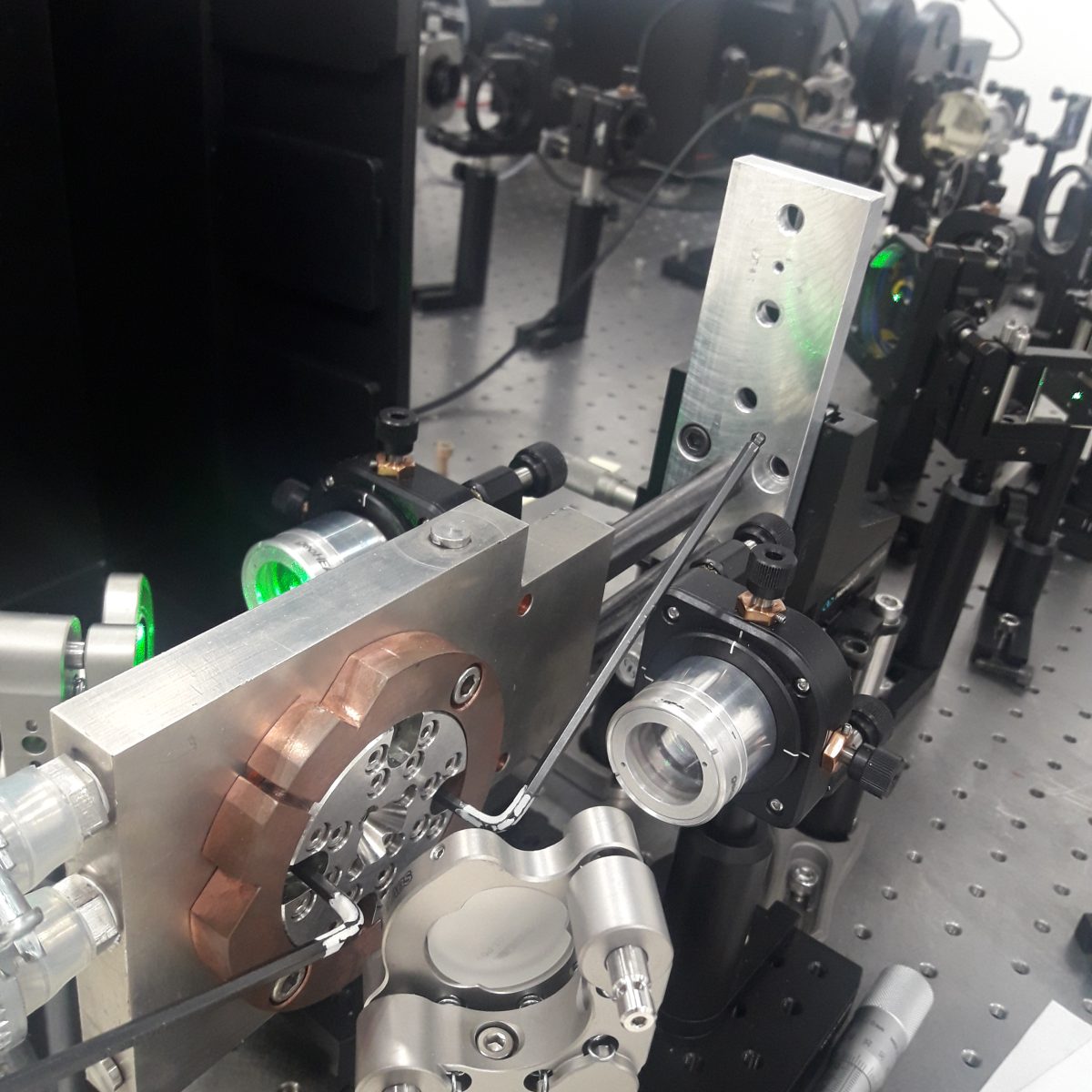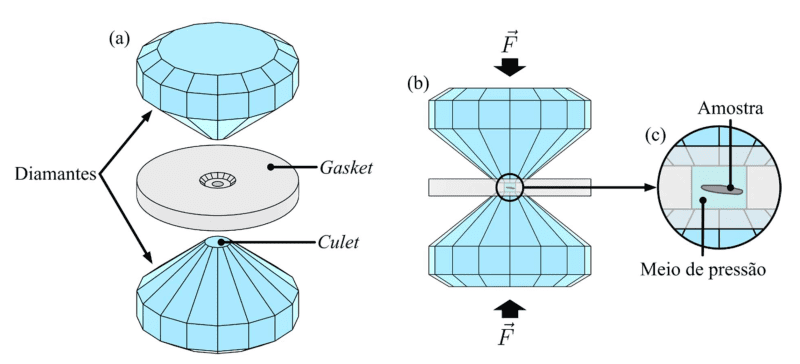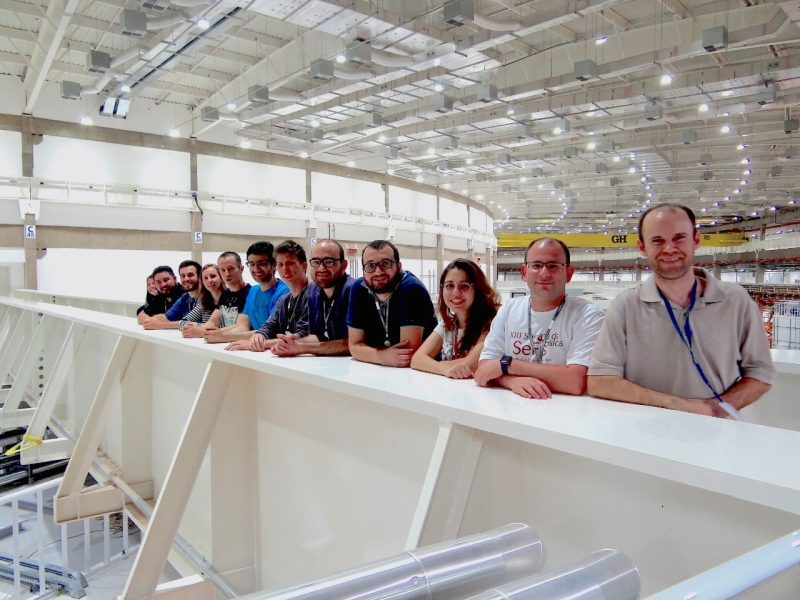
Diamond Anvil Cell used for obtaining high pressures in an optical system for laser heating used in superhydrides synthesis.
The research used diamond anvil cells (DAC) together with synchrotron light to investigate superconductors under extreme pressures
Superconductivity was first identified in 1911 by the physicist Heike Kamerlingh Onnes, and is still a significant focus of research in the field of condensed matter physics.
After using liquid helium to cool mercury to a temperature below -268.95 °C (just 4.2 °C above absolute zero), Onnes was able to observe something unprecedented: its electrical resistance disappeared. Later, in 1933, it was demonstrated that this phenomenon in mercury was also accompanied by the expulsion of the magnetic field from inside the material, known as the Meissner effect.
This reveals something even more profound about superconductivity: it was not just about materials losing their electrical resistance under certain conditions, but rather a new state of matter.
These properties were initially thought to only appear at very low temperatures, around a few dozen degrees Kelvin. But as studies progressed, superconductivity was found to manifest at higher temperatures in certain compounds, and even higher temperatures when certain materials were subjected to high pressure.
For example, hydrogen sulfide (one of the substances responsible for the characteristic smell of rotten eggs) exhibits superconductivity when subjected to pressures above 155 GPa and cooled to temperatures below –70 °C, as demonstrated in an article published in Nature in 2015.
This observation, along with theoretical predictions about this phenomenon, stirred new interest in the search for high-temperature superconductivity. And a class of substances with high levels of hydrogen known as superhydrides is currently the best candidate to be recognized as the first material known to demonstrate superconductivity at room temperature.
The great challenge in studying superconductivity in superhydrides lies in synthesizing these substances. Lanthanum decahydride (LaH10), for example, exhibits superconductivity at high temperatures and can be synthesized from metallic lanthanum when a hydrogen source is present, along with heat and extremely high pressure (170 GPa).
Reaching the pressures required to synthesize superhydrides, keep them stable, and allow their superconductivity to be observed (155 GPa for hydrogen sulfide, or 170 GPa for lanthanum decahydride) is a major challenge for equipment. These pressures are over a million times greater than atmospheric pressure at sea level. The pressure at Earth’s core is around 330 GPa, for instance, comparable to the pressure used in these experiments.
The devices used to produce such extreme conditions are diamond anvil cells (DACs); the principle behind how they work is very simple. Since pressure is an amount of force applied to a certain area, to reach such high pressures we can apply a moderate amount of force to a very small area: in this case, two diamonds pressed against each other.
– “Diamonds are good options for this type of application, not only because they are very strong, but also because they are very transparent to a large range of the electromagnetic spectrum. This allows the use of DACs in synchrotron light research stations, for example,” notes Lucas Francisco, who is now a Doctor of Applied Physics from the State University of Campinas.

Schematics of a diamond anvil cell (DAC) – Source: Francisco, Lucas Henrique. “Técnicas de raios X aplicadas ao estudo de supercondutores em pressões extremas” [X-Ray Techniques Applied to the Investigation of Superconductors Under Extreme Pressures]. Doctoral dissertation, State University of Campinas, 2023.
In an operating DAC, the culets of the diamonds compress a small disc generally made of a metallic material. This disc, called a gasket, contains a small hole where the sample can be inserted and acts as a compression chamber.
This hole is made using electro-erosion or laser perforation and has a very small diameter, on the order of hundreds or even tens of micrometers. And to generate the pressure needed using the diamond anvils and transfer it to the sample, a hydrostatic pressure-transmitting medium must be added. The most common media are silicone oil, a mixture of methanol and ethanol, and gases like nitrogen, argon, neon, and helium.
– “In many cases, the pressure-transmitting medium just keeps the sample hydrostatically subjected to the high pressures desired. But in other cases, this medium can be part of the process of synthesizing the compound being studied. For example, the study of superhydrides involves using hydrogen-rich compounds as pressure-transmitting media. In other words, besides fulfilling this function, they also become reagents inside the DAC so that the compound can be produced within the device at high pressure,” he adds.
Because they are only stable at certain pressures, superhydrides that demonstrate superconductivity must be studied in situ, in other words, within the same diamond anvil cell where they are synthesized.
– “Synchrotron light can be used on the material within the DAC, which makes it possible to measure X-ray absorption and diffraction to obtain data on the electronic and structural properties of materials. In other words, learn about how their atoms interact and how they are arranged,” Lucas notes.
His doctoral research began at the UVX facility, the previous synchrotron light source at the LNLS, but his objectives required capabilities beyond those available at that time. When Sirius was inaugurated, the work to commission the experimental facilities was an essential part of Lucas’s research process.

Lucas (fifth from right to left) alongside members of the Extreme Conditions Group at LNLS during the transition from UVX to Sirius in 2019.
Using a DAC with culets of just 100 μm and a gasket with a hole measuring roughly 50 μm (one twentieth of a millimeter), he was able to produce pressures exceeding 100 GPa while conducting measurements in the Ema beamline, one of the experimental stations at Sirius that specializes in conducting experiments under extreme pressures and temperatures.
As Lucas states in his dissertation, “[…] Besides the gains in photon flow in Sirius, the micrometric dimensions of the beam at Sirius represents a notable gain related to extreme conditions over UVX, the previous synchrotron accelerator at the LNLS, which had a minimum beam width on the order of ~100 μm. The concentration of radiation in a smaller area is especially important for experiments involving extreme pressure, since the culet diameter should be greater than or equal to the diameter of the beam used in the experiment.”
Lucas was able to produce pressure of 127 GPa together with the Sirius team while investigating the superconductive phases of cerium superhydrides, using ammonia borane (NH3BH3) as a pressure-transmitting medium and hydrogen source. At that time, that was the highest pressure that had been attained at CNPEM facilities.
Like hundreds of other external users who are already using the cutting-edge facilities at Sirius, Lucas got a first-hand look at the enormous advantages that a fourth-generation synchrotron can offer Brazilian science. Research that involves measuring information and data that were difficult or even impossible to measure with older-generation synchrotrons is now feasible with the development of these new accelerators. Alongside Lucas Francisco, Sirius will play an integral role in the training and work of other Brazilian scientists in the short, medium, and long term.
Lucas Henrique Francisco’s doctoral research was developed under the supervision of Narcizo Souza, head of the Condensed Matter Division at CNPEM, and supported by the São Paulo Research Foundation (FAPESP, process number 2018/10585-0) and the Brazilian National Council for Scientific and Technological Development (CNPq, process 140567/2018-6), part of the Ministry of Science, Technology and Innovation.
Review article was highlighted in the Applied Physics Reviews journal and explains how computed micro- and nanotomography can be used in fourth-generation synchrotrons like Sirius
Researchers at USP in São Carlos combined cutting-edge technologies and demonstrated that a molecule targeted by medications behaves differently than previously theorized.